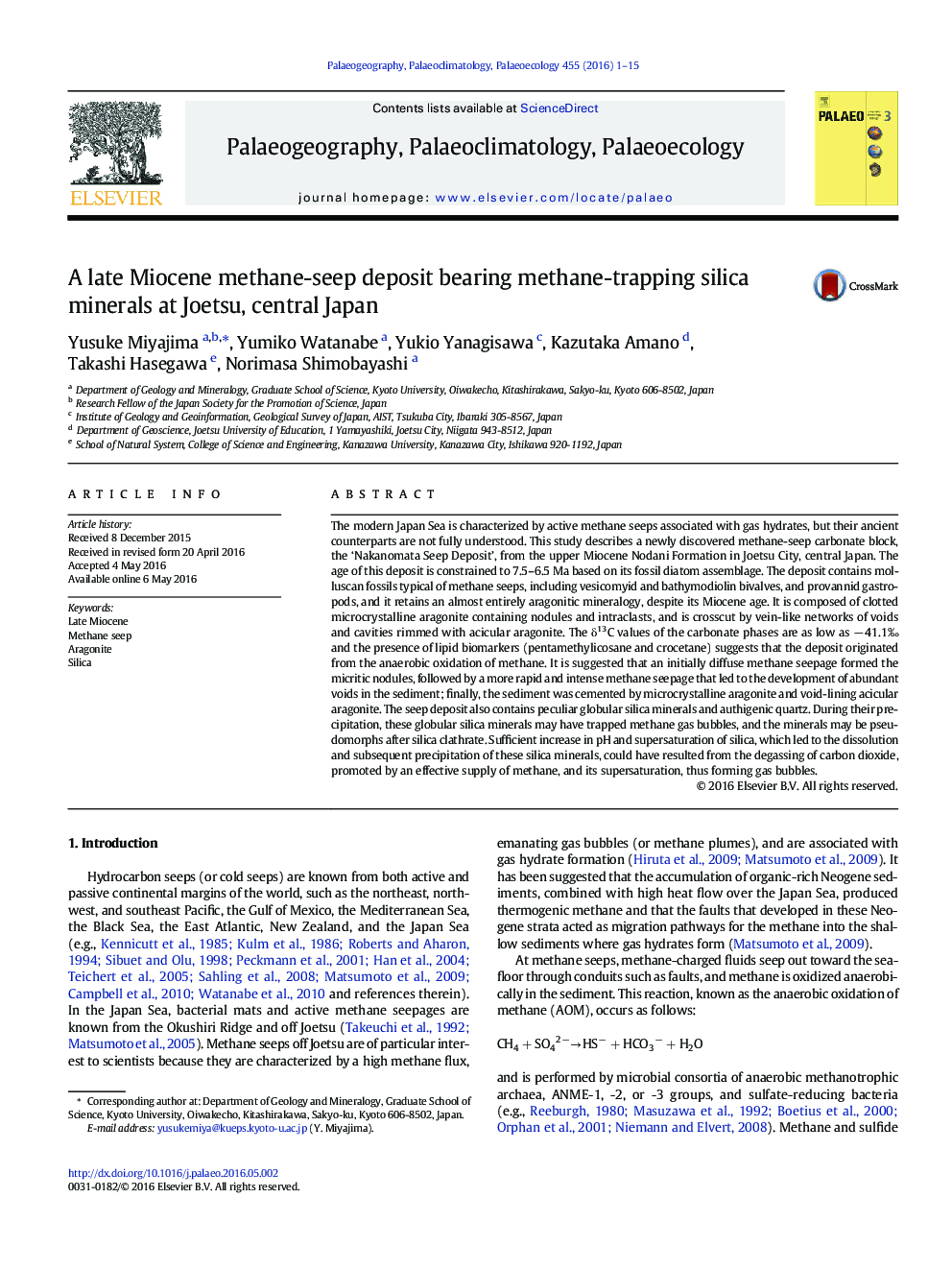| کد مقاله | کد نشریه | سال انتشار | مقاله انگلیسی | نسخه تمام متن |
|---|---|---|---|---|
| 4465684 | 1622136 | 2016 | 15 صفحه PDF | دانلود رایگان |
• Late Miocene aragonitic block found in Joetsu formed via methane seepage.
• Seep deposit contains peculiar globular silica minerals trapping methane gas.
• Carbonate and silica were related to vigorous seepage venting gas bubbles.
The modern Japan Sea is characterized by active methane seeps associated with gas hydrates, but their ancient counterparts are not fully understood. This study describes a newly discovered methane-seep carbonate block, the ‘Nakanomata Seep Deposit’, from the upper Miocene Nodani Formation in Joetsu City, central Japan. The age of this deposit is constrained to 7.5–6.5 Ma based on its fossil diatom assemblage. The deposit contains molluscan fossils typical of methane seeps, including vesicomyid and bathymodiolin bivalves, and provannid gastropods, and it retains an almost entirely aragonitic mineralogy, despite its Miocene age. It is composed of clotted microcrystalline aragonite containing nodules and intraclasts, and is crosscut by vein-like networks of voids and cavities rimmed with acicular aragonite. The δ13C values of the carbonate phases are as low as − 41.1‰ and the presence of lipid biomarkers (pentamethylicosane and crocetane) suggests that the deposit originated from the anaerobic oxidation of methane. It is suggested that an initially diffuse methane seepage formed the micritic nodules, followed by a more rapid and intense methane seepage that led to the development of abundant voids in the sediment; finally, the sediment was cemented by microcrystalline aragonite and void-lining acicular aragonite. The seep deposit also contains peculiar globular silica minerals and authigenic quartz. During their precipitation, these globular silica minerals may have trapped methane gas bubbles, and the minerals may be pseudomorphs after silica clathrate. Sufficient increase in pH and supersaturation of silica, which led to the dissolution and subsequent precipitation of these silica minerals, could have resulted from the degassing of carbon dioxide, promoted by an effective supply of methane, and its supersaturation, thus forming gas bubbles.
Journal: Palaeogeography, Palaeoclimatology, Palaeoecology - Volume 455, 1 August 2016, Pages 1–15
